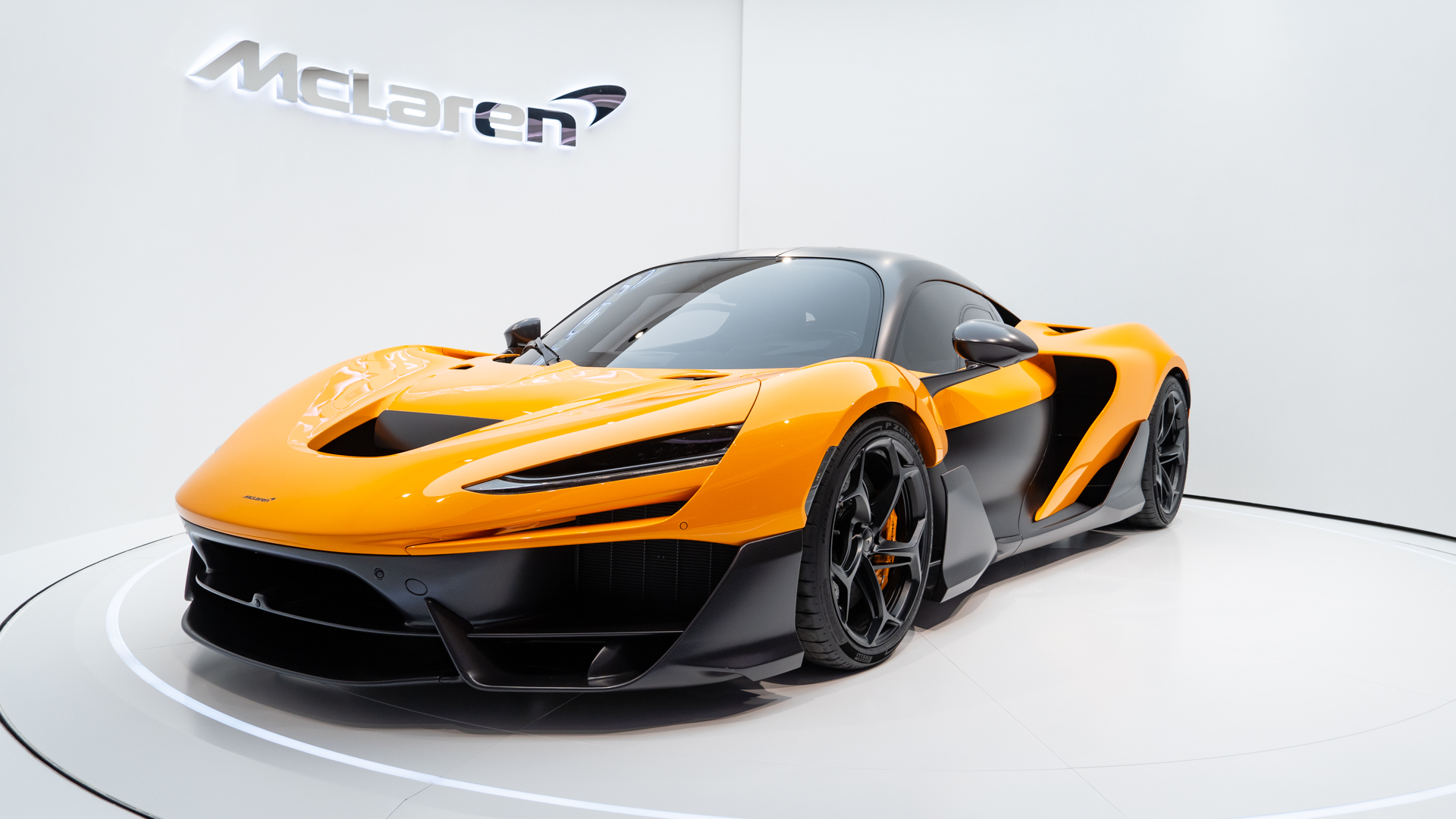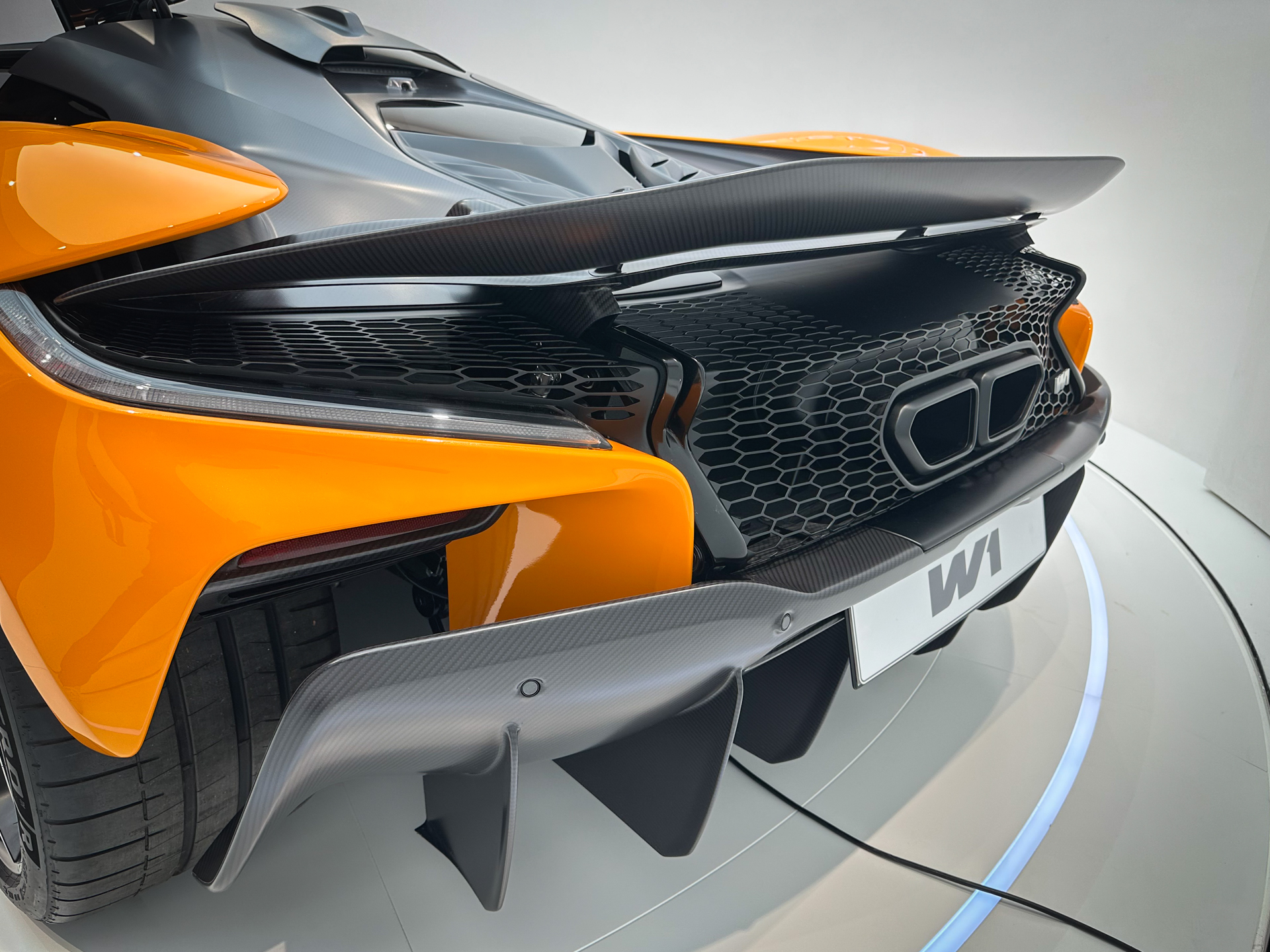Up close with the McLaren W1: Exclusive photos of the £2m hybrid hypercar
Successor to the iconic F1 and P1 is the most powerful McLaren road car yet


QUICK SUMMARY
McLaren's new W1 supercar is a spiritual successor to the F1 and P1. Powered by a twin-turbocharged V8 engine and Formula One-inspired hybrid battery system, the W1 produces 1,300 horsepower, making it the most powerful McLaren road car ever.
Priced at £2m (plus tax and optional extras), just 399 examples of the McLaren W1 will be built.
McLaren has revealed its new flagship hybrid hypercar – and T3 has spent some exclusive hand-on time with it. Called the W1, it is a 1,300-horsepower successor to the iconic F1 and P1, limited to 399 examples and priced from £2m.
Not that the price really matters, because McLaren says every W1 has already been allocated to a customer. Those lucky buyers will receive a two-seat, rear-drive hypercar that features Formula One-derived suspension and ground-effect downforce, plus a race mode that is said to deliver a “world-first” road-to-track transformation at the touch of a button.

Revealed on the 50th anniversary of McLaren securing its first Formula One Drivers’ and Constructors Championships, the W1 is powered by an all-new 4.0-litre, twin-turbocharged V8 engine. The hybrid electric system has a tiny 1.4 kWh battery and an electric motor that produces 342 horsepower all on its own. These are connected to a new eight-speed transmission that uses the electric motor for reverse.
Total output is a massive 1,258 hp, while torque is an equally muscular 1,340 Nm. Despite only being two-wheel-drive, McLaren says the W1 accelerates to 60 mph in 2.7 seconds. More impressive is a 0-124 mph (200 km/h) time of just 5.8 seconds, while 186 mph (300km/h) takes less than 12.7 seconds. The latter is almost four seconds quicker than the McLaren P1 and 7.5s quicker than the F1. Top speed of the W1 is electronically limited to 217 mph, McLaren says.

Described by its makers as “a supercar for all occasions,” the W1 weighs 1,399 kg, which is just 4kg more than the P1, and has a claimed best-in-class power-to-weight ratio of 899 hp per tonne. That stat, as well as the W1’s specific power output of 230 hp per litre, is the highest of any McLaren supercar to date. The motor produces 22.7 horsepower per kg, which McLaren says is “directly comparable to Formula 1 e-motors.”
That said, the tiny battery means the W1 can manage just 1.6 miles of electric-only driving – enough to get away from your neighbours without waking them up, but not much more. It’s also less than the 6.2 EV miles of the decade-old P1. McLaren says the electrical system is 40 kg lighter than that of the P1, yet produces almost twice the power
As well as low weight and outright power, the McLaren W1 promises to major in trick aerodynamics too. It is kitted out with what McLaren calls its most advanced active aero features ever fitted to the road car, headlined by a system called McLaren Active Long Tail.
Get all the latest news, reviews, deals and buying guides on gorgeous tech, home and active products from the T3 experts

This sees the W1’s rear wing extend rearwards by 300 mm to increase downforce and stability when driving on track. With McLaren Track mode activated, the car also lowers its ride height – by 37 mm at the front and 17 mm at the rear – unlocking up to a claimed 1,000 kg of downforce in high-speed corners. Enabling Race mode also sees the front wing swing into place, creating a full-width lower frontal area and feeding air under the car. Thankfully, the front wing tucks away for road driving, and there’s a vehicle lift system to tackle speed bumps.
Michael Leiters, chief executive officer of McLaren Automotive said of the W1: “...we are again pushing the boundaries of real supercar performance with an epic hybrid powertrain featuring our all-new MHP-8 V8 engine, the most advanced aerodynamic platform of any McLaren road car and extensive use of advanced lightweight materials. This allows us to engineer a supreme track driving experience from the same car that gives unparalleled driving enjoyment on the road.”

Revving to 9,200 rpm, McLaren says the W1 is its fastest-accelerating and fastest-lapping road car of all time, sprinting to 186 mph faster than the three-seat Speedtail and lapping a “reference track” three seconds quicker than the McLaren Senna.
The F1 tech continues with the W1’s suspension, which is mounted directly to the “Aerocell” carbon fibre tub, complete with front arms that are visible when outside the car. McLaren says “key components” of the suspension are 3D-printed to save weight, while some components are made from titanium.
The cabin is accessed via new, vertically-opening ‘anhedral’ doors, and once inside drivers are asked to move the pedals, steering wheel and primary controls to their position, since the seats are integrated into the monocoque. The carmaker says its McLaren Special Options (MSO) department can offer “virtually unlimited bespoke options” for the interior specifications.

A pair of buttons on the steering wheel activate the car’s F1-style electric overtaking boost, and its Drag Reduction System (DRS), which adjusts the rear wing for less drag and more straight-line speed. Rocker controls for adjusting the chassis and powertrain sit atop the instrument binnacle, just as they do in the McLaren Artura, where they can be reached by outstretched fingers and without the driver taking their hands off the wheel.
A bit of theatre is added thanks to the roof-mounted start/stop button, plus gear select buttons, window controls and the Race mode switchgear – and these are all found alongside a digital rear view ‘mirror’ fed by a camera on the back of the W1.

Lastly, the car has an 8-inch touchscreen display on its dashboard, running McLaren’s own infotainment system and wired Apple CarPlay via USB-C. There’s a luggage shelf behind the seats, accessible by moving the flat-folding headrests, and with a 117-litre capacity which McLaren says is enough for two weekend bags – or two crash helmets.
Alistair is a freelance automotive and technology journalist. He has bylines on esteemed sites such as the BBC, Forbes, TechRadar, and of best of all, T3, where he covers topics ranging from classic cars and men's lifestyle, to smart home technology, phones, electric cars, autonomy, Swiss watches, and much more besides. He is an experienced journalist, writing news, features, interviews and product reviews. If that didn't make him busy enough, he is also the co-host of the AutoChat podcast.
